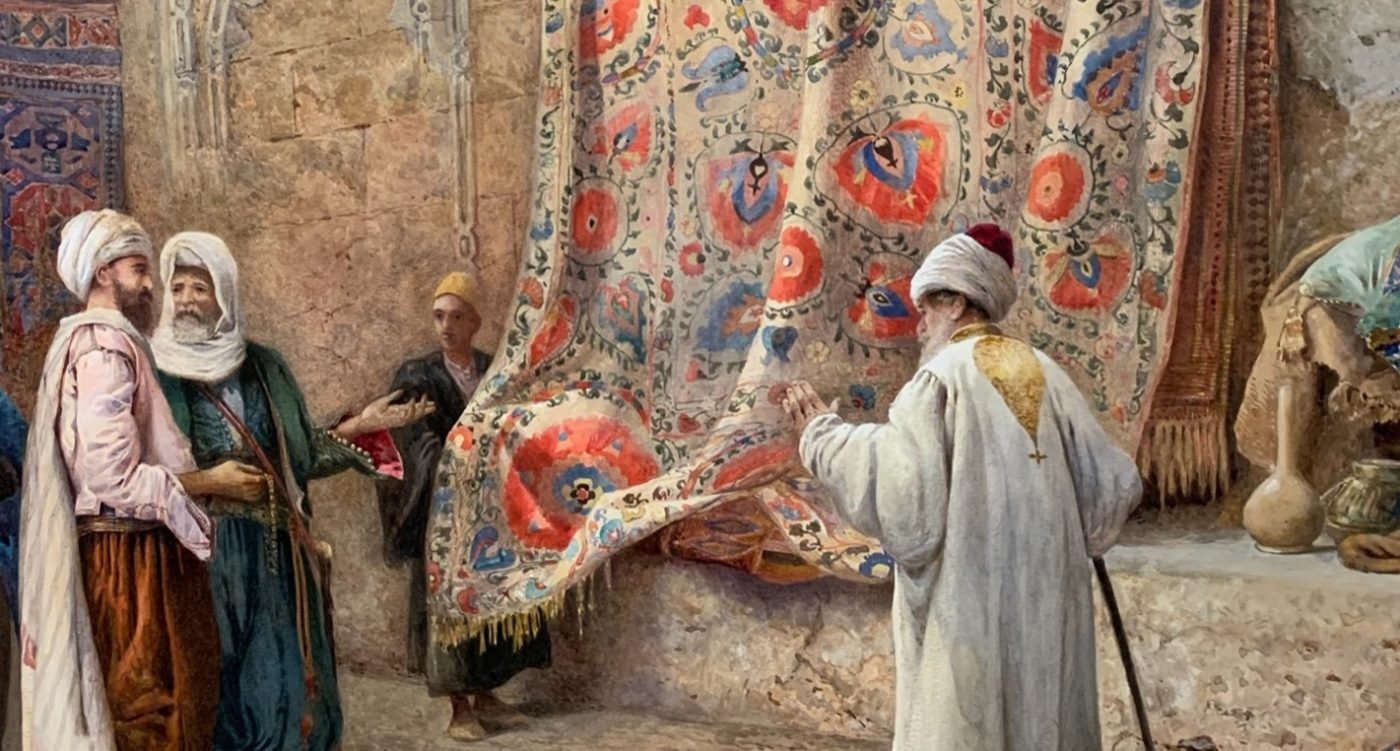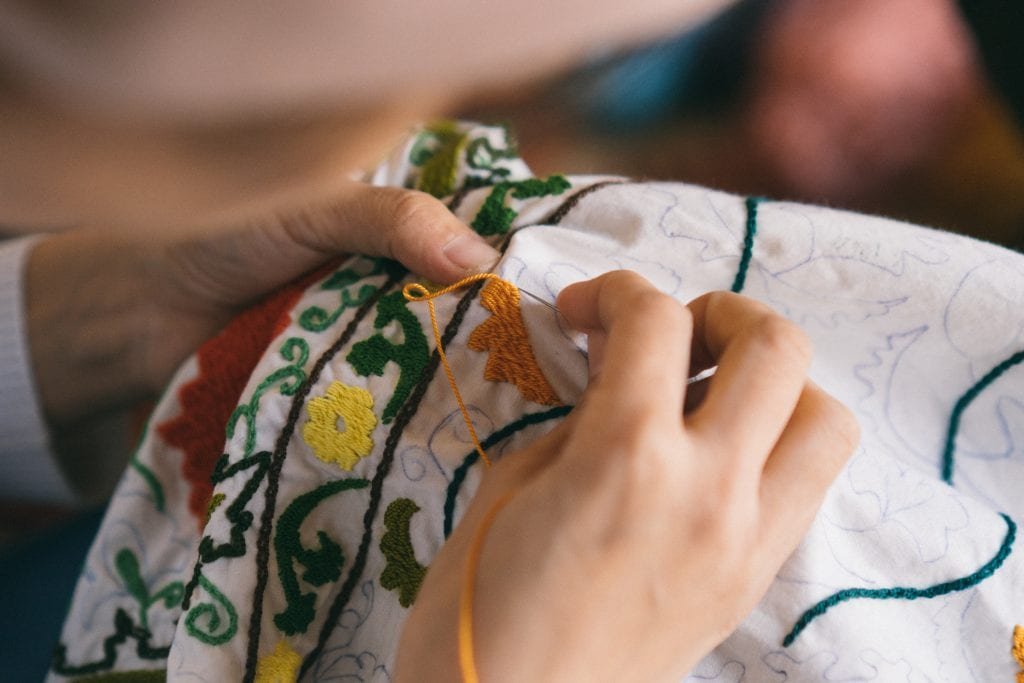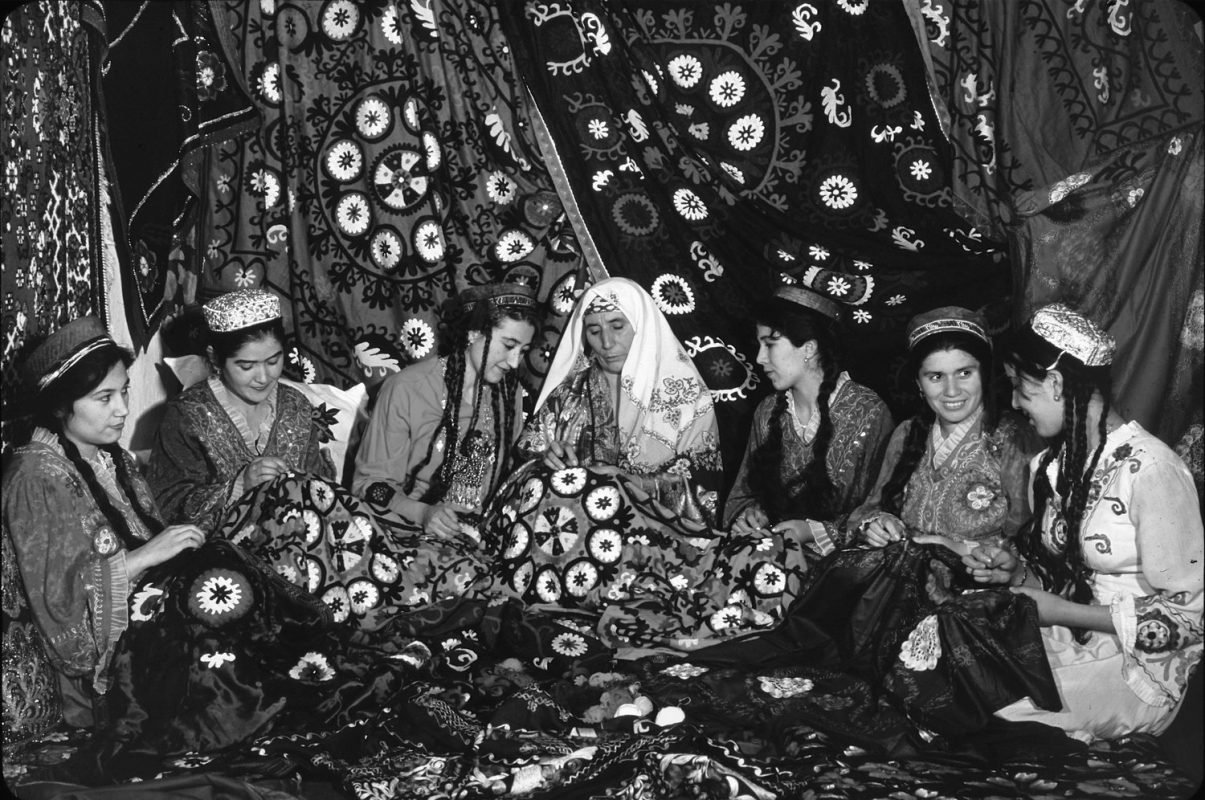Threads of Tradition: Exploring the Intricate Techniques and Rich Heritage of Suzani Crafting!
Welcome to a world of woven textiles with passion, skill, and age-old tradition. Step into the vibrant realm of Suzani crafting, a textile technique that has held a special place in the hearts and homes of Central Asia for generations. But what exactly is Suzani, and how is it made? Let’s embark on this captivating journey that spans not just threads and needles, but time itself.
A Tapestry of History: Suzani’s Ancient Roots
Suzani – the word rolls off the tongue as smoothly as its patterns flow across the fabric. Derived from the Persian word suzan, meaning “needle,” Suzani refers to embroidered and decorative tribal textiles. In the heartland of Central Asia, this traditional craft has been passed down from generation to generation, mother to daughter, and for centuries has remained a tangible testament to the region’s cultural heritage.

Suzani: A Symbol of Life’s Milestones
Beyond being a simple home decor, Suzani held a deeper significance in Central Asian society. It was a rite of passage, a symbol of major life events. When a girl was born, her mother would immediately start creating a Suzani for her dowry. This was not just an act of labor, but a labor of love – each stitch infused with hopes and blessings for the daughter’s prosperous and happy future.
How is Suzani Made? Discover the Mesmerizing Craftsmanship Behind Each Stitch!
Have you ever paused to marvel at the intricate design and exquisite details of a Suzani textile? Ever wondered about the masterful hands and the hours of patient labor that bring such beauty to life? Today, we’re about to take a journey through time, answering a question that’s probably crossed your mind – How is Suzani made?
Creating a Suzani is not a task undertaken lightly. It’s a painstaking process that requires not just skill, but a deep understanding of symbolism and color theory. Each Suzani begins its life as a white cotton or silk fabric. The design is then traced onto the fabric using a template, which typically includes natural motifs like flowers, fruits, vines, and occasionally birds and animals.

The Preparation – The Start of a Suzani Journey
“Every journey begins with a single step,” as Lao Tzu said. In the case of Suzani, this journey commences with the careful selection and preparation of materials. The primary fabric used is usually cotton or silk, while the threads for embroidery are often dyed silk or cotton.
Embroidering the Canvas: The Use of Silk and Cotton Threads
Once the design is set, the next stage of Suzani fabric creation begins – the embroidery. This is where the real magic happens, as the artisan brings the traced design to life with a rainbow of silk or cotton threads. The most commonly used stitches are chain, satin, and buttonhole stitches, each adding a unique texture and depth to the design. This process can take weeks, months, or even years, depending on the complexity of the design and the size of the textile.

Suzani’s Colorful Palette: Dyeing with Natural Ingredients
What sets Suzani apart is its bold and vibrant colors. Traditionally, these hues were derived from natural sources. Roots, leaves, bark, and even insects were utilized to create a rich palette of colors. This practice has been mostly replaced by synthetic dyes in recent years, but some artisans still uphold the tradition of natural dyeing, adding another layer of authenticity to their creations.
From Many, One – Assembling the Suzani
Suzani pieces are rarely created as a single whole cloth. Instead, smaller pieces, typically created by different individuals, are stitched together to form the complete design. This collaborative aspect of Suzani making, a testament to the collective spirit of the cultures it hails from, gives the textile a sense of community and shared history.
Suzani Styles: A Reflection of Regional Identities
Despite the shared tradition of Suzani crafting across Central Asia, the designs, techniques, and color schemes often differ from one region to another. Each style is a reflection of the local culture, landscape, and way of life, making every Suzani piece a unique tapestry of regional identities.
The Bukhara Style: Where Elegance Meets Simplicity
Bukhara, a city in modern-day Uzbekistan, is renowned for its Suzani style characterized by elegance and simplicity. The primary motifs in Bukhara Suzani are rosettes and flowers, often set against a red or white background. The patterns are typically large and bold, yet the overall design remains balanced and pleasing to the eye.
Samarkand Suzani: A Symphony of Color and Complexity
Samarkand, another ancient city of Uzbekistan, offers a strikingly different Suzani style. Samarkand Suzanis are known for their complex designs and rich, contrasting colors. The motifs often include a myriad of flowers, vines, and sometimes animals and birds, creating a harmonious symphony of life on the canvas.
Threads of Tradition: Exploring the Intricate Techniques and Rich Heritage of Suzani Crafting!
The Suzani crafting process is steeped in tradition and cultural significance. But beyond the eye-catching designs and vibrant colors, what truly makes Suzani stand out is the dedication, skill, and love poured into each piece by the artisan. This is not just a craft, but an intimate dialogue between the maker, the wearer, and the threads that bind them.
Preserving the Tradition: The Role of Suzani in Modern Times
Despite the onslaught of mass-produced textiles and rapid modernization, Suzani continues to thrive, thanks to the efforts of artisans, communities, and organizations dedicated to preserving this age-old tradition. Suzani is now gaining recognition and appreciation not just in Central Asia, but globally, as an exquisite form of textile art. It serves as a reminder that in our increasingly digital world, there is still room for the handmade, the traditional, and the timeless.
In conclusion, the Suzani-making process is a testament to the time-honoured traditions of craftsmanship, patience, and community. Each piece of Suzani is not merely a product but a living, breathing narrative. It is an art form that embodies both the individual craftsmanship and collective effort of the artisans, binding the threads of history, culture, and design into a unique tapestry of beauty.

